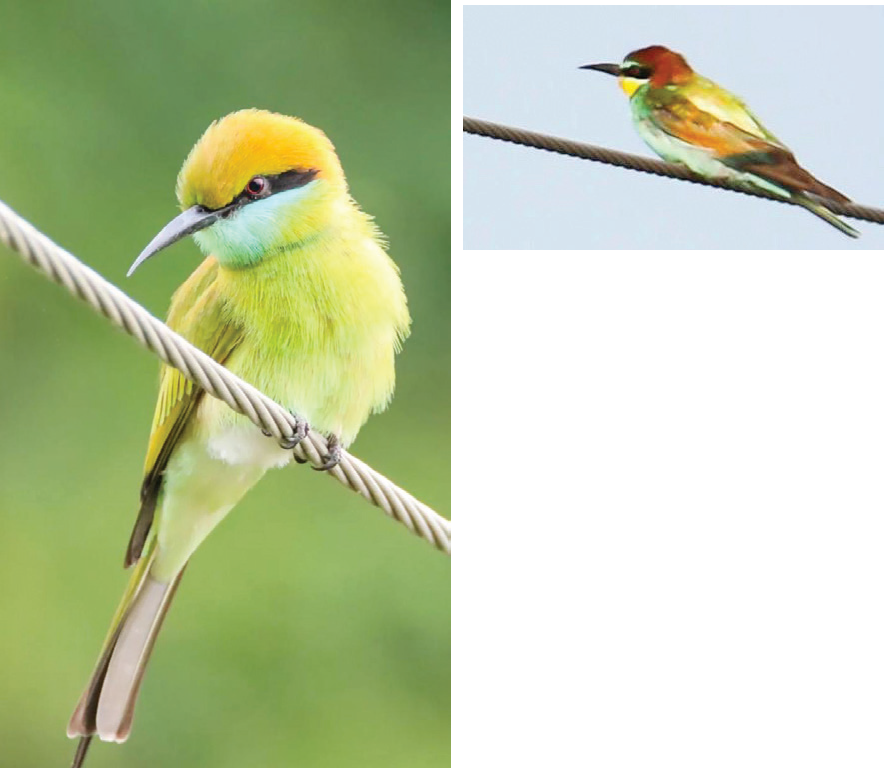
Bird watchers treasure wintering winged visitors
NT Bengaluru: Scores of migratory birds have been making their way to Karnataka since September to the delight of bird watchers. Bird watchers and wildlife lovers like Dr Mohan Krishna, who has an ENT (Ear, Nose Throat) practice in KGF (Kolar Gold Fields) town in Kolar district, is one such enthusiast. He spotted a European Bee-Eater in Ajjapalli village of Bangarpet taluk in Kolar district and was fortunate enough to snap a few pictures of the winged visitor.
Dr Mohan Krishna said that he spotted the species in the first week of October, adding that the differences between the European Bee-Eater and Green Bee-Eater, which is native to India, are noticeable. “We usually see the regular Indian Bee-Eater, which has a greenish tinge. The European Bee-Eater is lengthier. It has some yellow and brown plumage as well. Its throat is yellowish. The normal Green Bee-Eater is bright green with a blue tinge,” he said.
European Bee-Eater migratory: European Bee-Eaters breed in southern and central Europe besides northern Africa but they winter in West Asia and India as well. As the name suggests, the diet of the species comprises mainly honey bees and other insects. “At a lake near KGF, I saw some Painted Storks also, which we don’t usually see.
Last year, they made a pit stop there. They were there only for a week or so,” Mohan added. It is to be noted that Painted Storks are not migratory. Bengaluru-based ornithologist Dr S Subramanya said that the European Bee-eater is a migratory bird that regularly winters south of around Bengaluru.
“That’s not a very rare bird anyway. They do come to south India. In Kanakapura, Cauvery Wildlife Sanctuary around Sangama, KGF, and many other places way down to Coimbatore region, they can be seen,” he said. “The migratory birds start arriving early September and they stay until about late March,” he added. Bird watchers also pointed out that the wintering birds in Bengaluru included ducks like pintails, shovelers, pocahards and teals apart from others such as sandpipers, harriers and warblers.
 English daily published in Bengaluru & Doha
English daily published in Bengaluru & Doha






